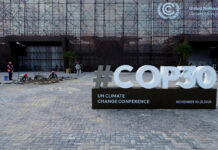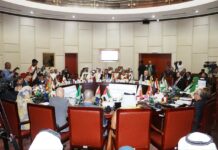 Blessed with one of the world’s highest solar radiation rates, averaging about 5.5 kilowatt-hours per square meter daily,Syria holds immense potential to become a regional leader in renewable energy. Yet its path toward solar power has been driven less by strategic foresight than by the pressures of necessity, unfolding as a story of resilience, adaptation and uneven progress.
Blessed with one of the world’s highest solar radiation rates, averaging about 5.5 kilowatt-hours per square meter daily,Syria holds immense potential to become a regional leader in renewable energy. Yet its path toward solar power has been driven less by strategic foresight than by the pressures of necessity, unfolding as a story of resilience, adaptation and uneven progress.
Across Syria, most regions receive over 3,000 hours of sunshine annually. The vast eastern and southern deserts, largely uninhabited, provide optimal conditions for utility-scale solar farms. This natural advantage could one day make Syria a key link in a regional clean energy corridor between Europe and Asia. For decades, however, that promise remained unrealized, until crisis forced innovation.
A Grassroots Solar Renaissance
The country’s solar revival did not emerge from state planning but from individual ingenuity amid infrastructure collapse. As the national electricity grid deteriorated, solar panels began appearing on rooftops of homes, hospitals and schools. Citizens, driven by survival, imported panels directly and created decentralized energy networks that filled the vacuum left by the state. What began as a stopgap became a parallel economy, one that offered a lifeline during years of shortages.
The rapid, unregulated spread of solar power has revealed deep challenges. High installation costs keep systems out of reach for much of the population. The absence of quality control has opened the market to low-grade and counterfeit components, while a shortage of technicians and spare parts hinders maintenance. Dust storms frequently coat panels, cutting their efficiency and underscoring the daily obstacles facing Syrians who rely on them.
Between Salvation and Strain
Public attitudes toward solar power reflect this dual reality. For many households, it remains a “project of salvation,” the only means to power essential appliances and maintain a sense of normalcy. Business owners view it as an unavoidable but valuable investment. Yet for others, the costs of installation, upkeep and battery replacement have become new burdens layered atop economic hardship.
A recent government decision to sharply raise electricity tariffs has reshaped the debate. Syrians now compare solar costs not to past subsidized rates but to current and anticipated bills, making solar systems appear increasingly practical. However, this economic shift has widened inequality: wealthier citizens can secure energy independence, while poorer families remain in the dark.
From Necessity to Strategy
What began as an improvised response to collapse could now form the backbone of Syria’s energy future. The challenge for policymakers is to transform fragmented, individual efforts into a coordinated national strategy; one that ensures the sun shines equally on all Syrians, not just those who can afford it.









